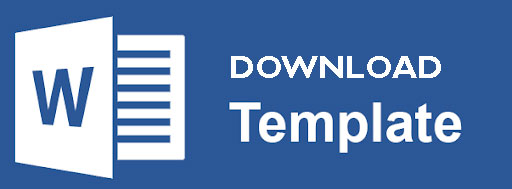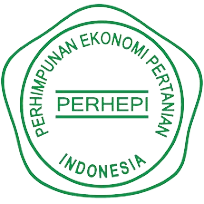Identifikasi Potensi Bahaya pada Proses Produksi di Pabrik Gula Pradjekan Kabupaten Bondowoso
DOI:
10.25047/jmaa.v2i2.58Downloads
Abstract
PG. Pradjekan merupakan perusahaan manufaktur yang memiliki andil dalam pasokan gula dalam negeri. Gula yang dihasilkan berasal dari tebu yang melewati 5 stasiun proses produksi yakni stasiun gilingan, pemurnian, penguapan, masakan, dan putaran. Pada setiap stasiun proses produksi banyak melibatkan mesin – mesin berukuran besar dan alat-alat yang memiliki potensi risiko operasional cukup tinggi dan dapat menimbulkan potensi bahaya hingga mengakibatkan kecelakaan kerja pada pekerja. Sejak tahun 2016 PG. Pradjekan telah menjalankan SMK3, namun ternyata kecelakaan kerja masih saja terjadi disetiap tahunnya. Ada 4 kasus kecelakaan kerja yang tercatat dari tahun 2017 hingga 2021 dengan kategori kecelakaan berat. Tujuan dari penelitian ini adalah mengidentifikasi potensi bahaya dan penilaian risiko pada setiap staisun proses produksi gula kemudian dilakukan pengendalian risiko apa yang harus diterapkan, sehingga dapat dilakukan tindakan pengendalian yang tepat.Teknik analisa bahaya yang cukup tepat menganalisis dan mengidentifikasi adalah dengan metode Failure Mode and Effect Analysis (FMEA). Hasil FMEA merupakan urutan prioritas dari failure mode yang memiliki nilai Risk Priority Number (RPN) tertinggi. Hasil penelitian dapat diketahui ada 49 potensi bahaya yang teridentifikasi dari seluruh stasiun proses produksi gula. Hasil penilaian risiko yang memiliki nilai RPN tertinggi (kritis) yakni masuk kedalam mesin cane leaveller (extreme risk), kebocoran tangki (high risk), terjatuh dari tangga evaporator (high risk), terkena cairan gula panas (high risk) dan ledakan panel (high risk). Rekomendasi pengendalian yang diberikan berdasarkan hirarki pengendalian yaitu, engineering control, administrative control dan alat pelindung diri.
Keywords:
Hazard Identification Risk Assessment Risk Control FMEA RPNReferences
A. I. Suryani et al. 2012. Pengaruh Potensi Bahaya terhadap Risiko Kecelakaan Kerja di Unit Produksi Industri Migas PT. X Aceh The Effect of Hazard Potential on Workplace Accident Risk at Production Unit of Oil and Gas Industry PT X Aceh. Jurnal Precure. vol. 1, no. April, p.160116.
Alfi, Z. 2006. Upaya Menurunkan Jumlah Cacat Pada Mesin D3E Dengan Menggunakan Metode FMEA (Studi kasus : PT. Filtrrona Indonesia, Sidoarjo). Surabaya : Institut Teknologi Sepuluh Nopember Surabaya
DCSI (Departemen for Communities and Social Inclusion). 2020. Risk Management Frame Work. South Australia : Goverment of South Australia.
E. Sari, “Analisis Resiko Proyek Pada Pekerjaan Jembatan Sidamukti – Kadu Di Majalengka Dengan Metode Fmea Dan Decision Tree,” J-Ensitec, vol. 2, no. 02, pp. 38–46, 2016, doi: 10.31949/j ensitec.v2i02.306.
NSS (National sugar Summit). 2020. Reinventing New Sugar Policy Towards National Food Reselience in commemoration of Historical Milestone. Jakarta : Seminar Online Buletin Agi Ikagi. 25 November 2020
White, I., and Haughto, G.2017. Hazard Nabagement and The Tyranny of the Present. International Journal of disaster Risk Reduction. Available: http://dx.doi.org/10.1016/j.envdev.2017 01.005.
License
Copyright (c) 2022 Nidya Shara Mahardika, Yuli Wibowo, Nindia Furqidatul Hasanah

This work is licensed under a Creative Commons Attribution 4.0 International License.
You are free to:
- Share — copy and redistribute the material in any medium or format for any purpose, even commercially.
- Adapt — remix, transform, and build upon the material for any purpose, even commercially.
The licensor cannot revoke these freedoms as long as you follow the license terms.
Under the following terms:
- Attribution — You must give appropriate credit, provide a link to the license, and indicate if changes were made. You may do so in any reasonable manner, but not in any way that suggests the licensor endorses you or your use.
- No additional restrictions — You may not apply legal terms or technological measures that legally restrict others from doing anything the license permits.
Notices:
You do not have to comply with the license for elements of the material in the public domain or where your use is permitted by an applicable exception or limitation.
No warranties are given. The license may not give you all of the permissions necessary for your intended use. For example, other rights such as publicity, privacy, or moral rights may limit how you use the material.






